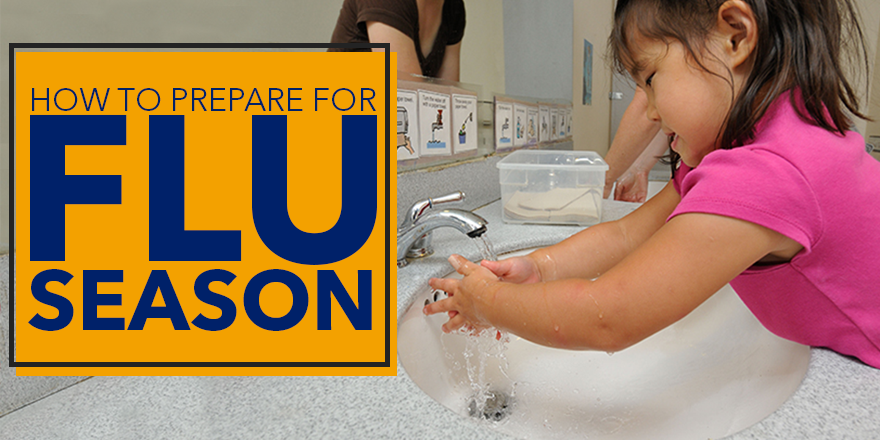On September 24, we released our fall report Picking Up the Pieces: Building a Better Child Care System Post COVID-19. Alongside this report, we feature an interactive website that includes videos, infographics and a map where you can get data for each state, the District of Columbia and Puerto Rico. You can also access a PDF version of the report in English or Spanish and our annual Appendices that analyze child care prices in 2019.
Why have we titled this report Picking Up the Pieces? As we all know, our lives changed dramatically beginning in March 2020 due to COVID-19. We thought it would be tone deaf to only speak about what the child care system looked like in 2019 when so much has changed over the first half of 2020. So, we gathered as much information and updated data as possible about the effects of COVID-19 on the child care system.The impact has been devastating. COVID-19 has furthered shattered a system that was already fragmented and unsustainable.
Our report is broken into chapters on Access, Affordability and Quality. We also feature interviews with economists who reviewed our data and gave their perspectives on the potential long-term impacts of COVID-19 on the child care industry. Throughout this report, we include our usual statistics around 2019 data. However, we also feature multiple case studies using updated 2020 data whenever possible. Keep reading to learn more about our major findings and find out how you can help reimagine the child care system.
ACCESS
- From 2018 to 2019, 79% of states reported a decrease in the number of family child care providers and 53% of states reported a decrease in the number of centers.
- Over 30 states were able to provide us with child care supply data as of July 2020. When we compare these numbers to 2019, we found that 35% of centers and 21% of family child care providers remained closed nationwide as of July 2020.
- We partnered with four child care data management systems to better understand the impact of COVID-19 on child care attendance: brightwheel, Early Learning Ventures, Procare Solutions and Wonderschool.
- Overall, we found that average child care attendance had only recovered to about 50% of what it was before the start of COVID-19.
AFFORDABILITY
- As we’ve done the past three to four years, we used our 2019 price data to estimate a national child care price. Similar to last year, that national price ranged from $9,200 to $9,600 – about 10% of median income for a married-couple family and about 34% of income for a single parent.
- At this point, we don’t have the data needed to determine if COVID-19 has made child care less affordable. However, we’ve heard anecdotally from providers that increased costs associated with PPE, health and safety supplies, and reduced group sizes have cut into their already-fragile income.
- In our report, we feature a case study from Child Care Aware® of Washington (CCAoWA), which developed a tool that providers can use to estimate cost per child in centers that considers reduced group sizes. CCAoWA found massive shortfalls for providers, especially for toddler and preschool classrooms. Although these group size restrictions are being lifted across the country, the financial damage on these providers could be long term.
QUALITY
- In 2019, our annual survey responses indicated Quality Rating Improvement System (QRIS) participation rates averaged about 63% for centers and 52% for FCCs nationally.
- On average, 9% of centers and only 2% of FCCs were nationally accredited. This means that a provider was evaluated by a nationally accrediting body such as the National Association for the Education of Children (NAEYC) and found to meet strict standards of child care quality.
- As with affordability, the long-term impact of COVID-19 on quality child care remains to be seen. However, we were able to conduct two cases studies on this topic in our report.
- Louise Stoney of Opportunities Exchange used the Cost of Quality Calculator developed by the Center for American Progress to analyze the cost to provide high-quality child care in different communities in two states. Overall, she found that rural areas and providers caring for infants and toddlers had the biggest shortfalls between cost to provide high-quality child care and the amount that states reimburse providers for subsidies.
- Our second case study analyzed data from Early Learning Ventures (ELV), a child care data management program based in Colorado. We examined the attendance numbers for a group of Colorado child care providers using ELV data from January to July by provider QRIS level.
- We found that providers at Colorado’s highest QRIS level began the year with an average attendance of around 37 children. As of July, attendance among this group of providers had dropped about 40%.
- Level 1 providers began 2020 with an average attendance of around 23 children. By July, their attendance had only decreased by 29%.
- The ELV case study only includes a subset of child care providers in one state. Much more research is needed to determine if this trend is seen in other states by a larger number of providers.
In the end, we found three elements that are needed in order to reimagine the children care system:
- For the child care industry to survive the COVID-19 pandemic, at least $50 billion is needed from Congress. Beyond this crisis, higher levels of funding are critical to creating a child care system that works for all of us.
- Data Interoperability. Accurate and timely data is essential to identifying gaps in the child care system. We need data systems that talk to each other across the country so that we can quickly analyze the data when crises such as COVID-19 hit.
- Child Care Resource and Referral (CCR&R) organizations. For years, CCR&Rs and other similar intermediaries across the country have provided child care referrals to families. They have also provided critical support to child care providers and the families they serve with training, technical assistance, and other resources. CCR&Rs collect critical data that can help policymakers and advocates understand the child care system. Expanded funding for CCR&Rs would strengthen the child care system overall.
At CCAoA, we believe that if there is no child care, there will be no recovery from COVID-19. As the economy recovers, parents need child care in order to return to work. However, we fear that there will be much fewer options available because child care providers cannot handle the financial strain caused by COVID-19.
How can you help?
- Look up your state’s data.
- Share this report with your social networks
- Read our policy recommendations and take action today.


.png?width=900&name=baby-boy-and-girl-playing-with-toys-in-playroom-to-PCPWKX2%20(1).png)



